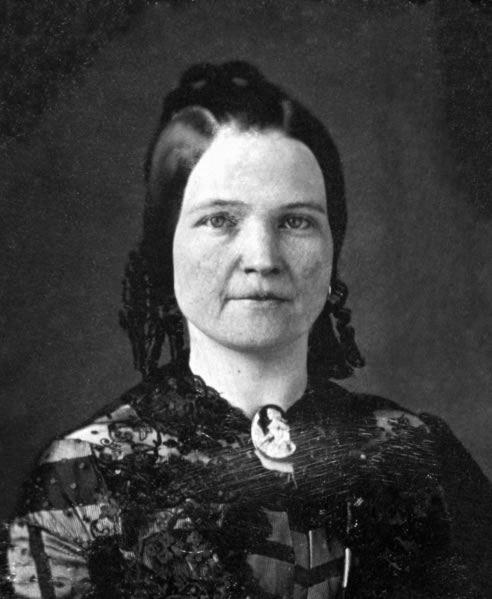Mary Todd Lincoln |
Mary Todd Lincoln was born on December 13, 1818, in Lexington, Kentucky. She was born into a wealthy Kentucky family, though her mother died when she was seven. The following year, her father married Betsy Humphreys. The family lived in a fourteen-room Kentucky mansion, which Mary shared with her fourteen brothers and sisters! Her father was close friends with Kentucky political leader Henry Clay, who engendered a love of politics within Mary. Like many young women of her day, Mary left school as a teenager to attend finishing school, where she studied drama, dance, music, social graces, and learned to speak French fluently. In 1839, Mary moved to Springfield, Illinois, to live with her sister, Elizabeth. While living in Illinois, Mary was courted by both Stephen A. Douglas and Abraham Lincoln, though it was Lincoln whom she would become engaged to. Despite the engagement, the pair broke up before becoming engaged again. They were finally married on November 4, 1842, at Mary’s sister’s home in Springfield. By marrying Lincoln, Mary Todd gave up a life of opulence for one of general poverty. Lincoln had not yet become a successful lawyer and was crushed by debt. Mary’s family did not approve of Lincoln, citing his awkward appearance and humble upbringing. Soon, however, Lincoln’s reputation as a lawyer grew and the pair were able to purchase a house in Springfield. Mary would have four boys: Robert, Eddie, Tad, and Willie. Mary raised the children at home while Lincoln traveled to courts throughout the state to argue cases and explain the law. In 1860, Mary and her children moved to the White House. By this time, her second son Eddie had died. The transition was extremely difficult for Mrs. Lincoln. Her family grew up with slaves. Some of her brothers were fighting in the Confederate Army, and two had been killed in battle. Things took a turn for the worse for the Lincoln family in 1862, when her eleven-year-old son Willie died (probably of typhoid fever). Willie’s death plunged Mary into a deep depression, which may have resulted in highly publicized public outbursts and incidences of irrational behavior. Mary further sought to ease her pain by traveling to New York City where she would go on incredible shopping sprees, buying up the most expensive clothes, silks, and materials. New York merchants were happy to allow her to run up prodigious lines of credit that totaled, at least at one point, over $27,000. Mary also dabbled in the supernatural and several times procured the services of spiritualists to try to contact her dead son Willie. Despite her outrageous behavior, which some historians attribute to bipolar disorder, Mary Todd frequently visited field hospitals for Union soldiers and often hosted lavish parties at the White House to maintain the aura and prestige of the house of the president. On April 14, 1865, Mary was present at the assassination of her husband at Ford’s Theater. Mary was inconsolable and soon returned to Illinois to recover. Her grief, however, would return with the death of her son Tad in 1871, and her behavior would become increasingly erratic over the course of the next few years. She would reportedly wander the streets of Chicago (while visiting her son Robert) with thousands of dollars in government bonds sewn into her jacket. She also continued to spend money lavishly on useless items and trinkets. In 1875, her sole surviving son, Robert, institutionalized his mother at a psychiatric hospital in Batavia, Illinois, where she apparently attempted suicide. By 1876, she was released to the custody of her sister, Elizabeth, in Springfield before embarking on a four-year trip traveling in Europe, where her health began to decline. In 1880, she returned to the Springfield home of her sister. She died on July 16, 1882, in Springfield at the age of 63.
|
 |
 |
 |
 |
 |
 |
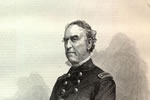 |
 |
 |
 |
 |
 |
| John Bell Hood | |||
 |
 |
 |
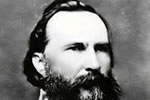 |
| Joseph Johnston | |||
 |
 |
 |
 |
| William H. Seward | Edwin M Stanton | ||
 |
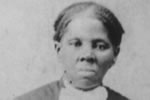 |
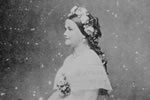 |
 |
